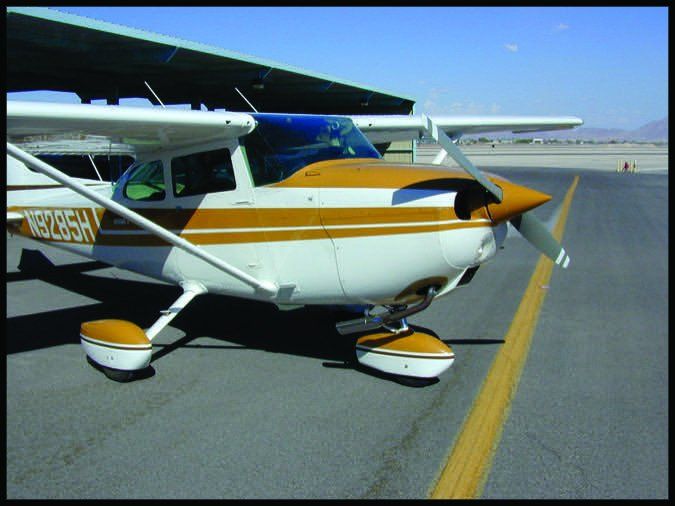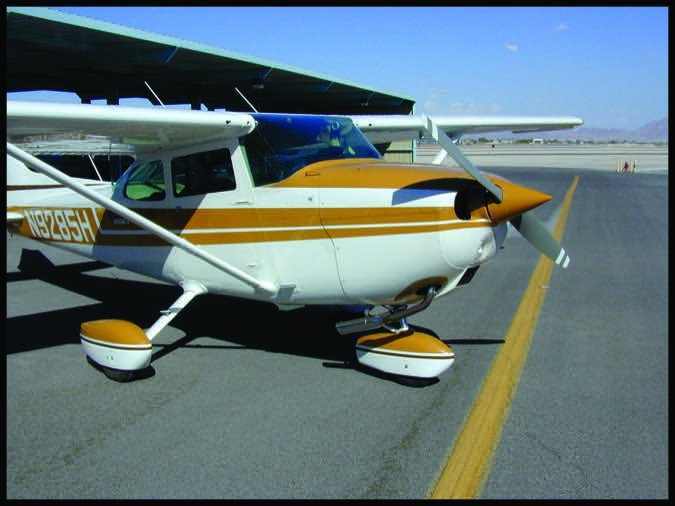
The problem with an airplane like that is you can’t really use it for travel,” said a pilot looking out the FBO window at a Cherokee 140 sitting on the ramp. That pilot was saying that an entry-level airplane—think two or four seats, fixed gear and no more than 160 hp—can’t go places. Show me where it says that. It’s hard to imagine Charles Lindbergh shrugging off the Ryan NYP because it barely made 110 mph. “Sorry, St. Louis, I’m not flying to Paris unless I can average a buck-fifty….” No. Lindbergh flew more than 33 hours between Long Island and Le Bourget, averaging 107 mph over the 3600 sm.
So yes—slow, entry-level airplanes can travel great distances. Still, they’re…slow. They also demand an operational mindset different from making the same trip in a known-icing Turbo SR22, for example, or a King Air. Because of their limitations, they often don’t get the respect they deserve. But entry-level airplanes remain popular, often because they’re the most airplane the owner can afford. So how to use it to travel?
Gotta start somewhere
In fact, it was my family airplane on the ramp being so cruelly maligned by the pilot in the window. We didn’t take it personally. The critic was a renter and lacked the knowledge of the liberating elements of owning even a “slow” airplane. Ours got us into general aviation aircraft ownership and taught us how to go places. In our first 22 months of ownership, we racked up 335 hours of traveling, all of it VFR, mostly to destinations at least five hours away.
Many pilots find ample satisfaction flying around their home airspace. Our goal was traveling by general aviation airplane, and we found a clean 150-hp 1969 Piper Cherokee 140D right in the local area. Purchased in 1995 for less than the 1990 Isuzu Trooper we drove to look at it, the jaunty little PA-28-140 offered the kind of low-cost flying my late wife Annie and I were looking for.
Five weeks after taking possession, the Cherokee helped me pass my private pilot checkride. Six days later, we flew from Wichita for a fuel stop near the Mississippi River, south of the St. Louis Class B airspace. From our perch at 7500 feet msl, we looked down at the bumper-to-bumper traffic on I-55 as we descended toward our fuel stop, which gave us our first true thrill of airplane ownership. “We could be stuck in that,” Annie said, motioning toward St. Louis, where we could see miles of headlights and taillights crawling along the choked ribbons of pavement.
After topping the tanks, we were off on a night flight to Indiana, where we overnighted. The next morning, we launched on a nonstop leg to an airport outside Washington, D.C. We’d flown nine hours from Wichita to reach D.C., foregoing 28 hours of driving. Our bags came with us, and we faced no security checkpoints. There also were no speed traps or traffic jams.
But there was some pucker factor: Tackling a 2500-nm round trip with a week-old private pilot certificate and 45 hours in the airplane. Planning was key.
No Airplane is perfect
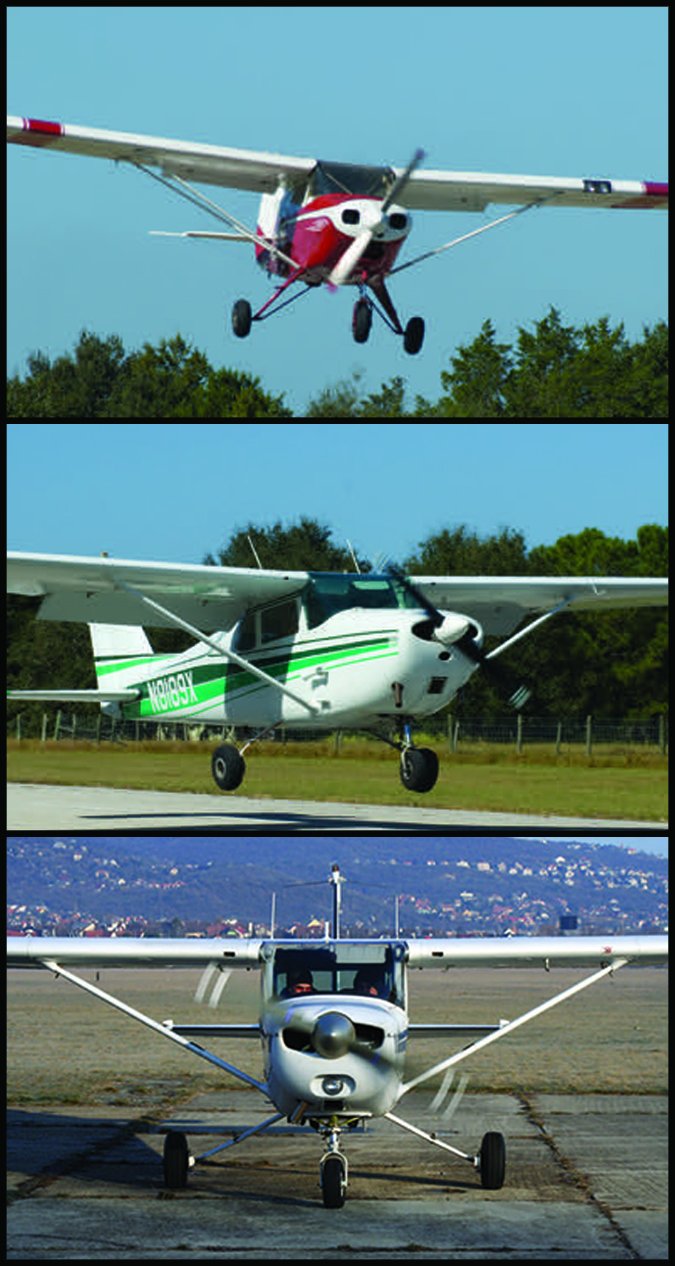
Peter Somogyi-Tóth
Entry-level airplanes are a relatively painless way to get into aircraft ownership. They’re usually easy to fly, simple to maintain, don’t use much fuel. They make possible $100 hamburgers and sightseeing flights with friends, along with serving as a platform for continuing your training beyond the private certificate. They can provide excellent transportation value for not much more in operating costs than a mid-range SUV.
As with any other airplane, they do have their limitations. Balancing fuel weight against payload may mean you load up the family but only have three hours of fuel. That results in no more than two-plus-thirty legs, allowing for legal—but perhaps not adequate—reserves. Add in a 30-knot headwind and you’re down around highway velocities for groundspeed. At least you can go direct.
Well maybe, as long as there’s no high terrain along your route. Yes, you can get an entry-level airplane up to 10,000 or so feet msl, but it takes a while to get there. Once you arrive, you won’t have much performance left to deal with downdrafts or a solid cloud deck rising up to meet you. The good news is the groundspeed you’ll enjoy coming down.
Even the airlines don’t use certain airplanes on routes where they don’t make sense. Why should you? — J.B.
Flexible planning
Most of us put minimal effort into planning a long drive to see family or friends. When you know where you’re going, the need for maps and guidebooks eases. You check the car, of course—air in the tires, oil in the crankcase, washer fluid and fuel for the road. Pack a snack and you’re off to Grandma’s. Flying? We started looking at weather days ahead of our desired departure date.
Traveling a few hundred or even a thousand miles by small plane takes a bit more preparation than driving. And when that airplane is limited in speed and range—and the pilot is VFR-only—weather becomes a major factor. Even a stiff headwind in bright, sunny VFR can drastically alter Plan A when flying an entry-level airplane. When you drive you’ll look at it, but chances are it won’t change your travel plans much, barring ice storms, floods or blizzards. When weather enters the equation, flexibility pays. Continuing VFR into IFR conditions is a well-known killer; ditto for scud running below VFR-legal ceilings. Remember, this not a life-and-death mission—it’s a family trip.
If you’re expected to arrive at a set time, break the news before you start the trip: You reserve the right to change your plans due to weather and other operational challenges. We used to tell our family and friends we’d call from the last stop—or better still, call them when we were on the ground at our destination. It’s best to have them relaxed at home and not pacing the FBO worried you’re 30 minutes late, or worse.
Explain that your schedule must necessarily be flexible—for safety’s sake—subject even to leaving another day, or not at all, should weather bully into possible routes. In fact, staying flexible and remaining within both the airplane’s limitations and your own may mean launching a day earlier than planned. Or a day later.
When planning your flight, consider your most-realistic speed expectations and route to take an airport break every two and a half to three hours, fuel capacity notwithstanding. Most passengers will be ready to stand, stretch and unkink by that point. So will you.
So, for a 350- to 500-nm trip it’s two 100-knot legs and done. Turn the key before noon, secure the bird by supper. By car, you’d still be hours out. By airline, you might not be out of the connection airport. For a 1000-nm trip, a set of four 2.5-hour legs gets you there; you’ll need to start early, and you’ll be tired when you arrive. Figure an hour on the ground at each of the three fuel stops and the day works out to 13 hours of travel.
By picking small, out-of-the-way airports wherever possible, the stops increase your opportunities to see new places and meet other private-plane travelers while avoiding the hubbub and expense of busy turbine-oriented airports. Do remember for the benefit of travelers new to general aviation that an urgent need for a nature stop takes more time to make than when driving—and unlike the Human Mailing Tubes, piston aircraft aren’t known for their lavatories. At best, a bottle or gel-filled plastic receptacle is the most you can offer.
The Downsides
Most of us would be thrilled at the option to swap out a 12-hour drive in exchange for flying four or five hours. But, there are limitations. For example, your entry-level family flivver may not be as spacious as the family sedan. You know that from the time you’ve spent flying it locally, but the slow, entry-level bird can take you there, with luggage and, sometimes, others.
Still, many would-be owners pass on perfectly good entry-level birds they can afford to fly because they lust for more knots than their wallets can support. So they miss out on some quality flying and travel, even if it is a little slower than they’d like. It’s still faster than driving.
Meanwhile, owners of such entry-level aircraft cruise happily along at 90, 100, sometimes 110 knots, carrying owners and families on adventures, vacations, even business trips. Flying what their budgets can support even lets some of these savvy pilots beat the airlines on some trips. It’s true.
For example, in 1995 the shortest trip times between Wichita and Washington, D.C., took nearly seven hours, not counting the early arrival to clear security and check baggage and the added time waiting on the carousel to disgorge your bags. These days, presuming the same flight schedules, an extra hour would need to get tacked on to the front end. On a 500- to 600-nm trip, the 100-knot airplane beats the airlines almost any time. And when it involved both of us, the expense was break-even at worst; we often saved money over the airlines by flying the Cherokee.
Can’t get there from here? Go around
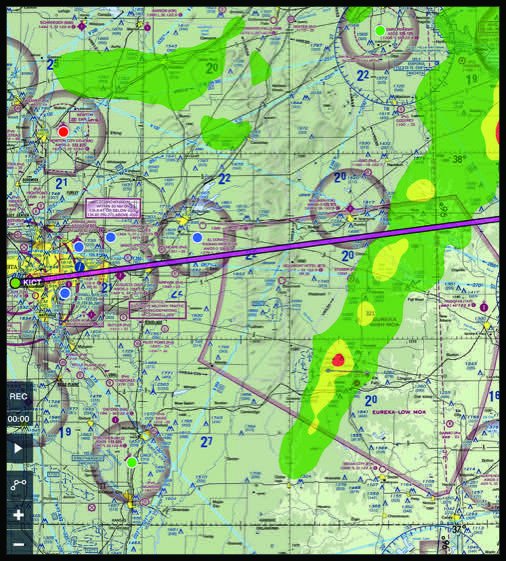
Flexibility helps keep self-flown trips more relaxed and enjoyable. But despite best-laid plans, sometimes you just need to make a new decision. Now this somewhat amazes me, but some pilots of my acquaintance will sit out a trip merely because the weather precludes going direct. What? It’s as if they know only how to fly GPS direct.
Sometimes the detour is the shortest time between two points if the detour lets you proceed, even if the detour adds an extra 100 or 150 miles. Beats not moving if safely navigable.
Many a time headed between Wichita and my Ohio River hometown, going direct meant facing off against bands of intense weather. Instrument rating or no, instrument-currency notwithstanding, there’s some weather no smart pilot challenges. Most of those trips with a detour well off my route still let me reach my destination airport at a penalty of an extra 45, 60, sometimes 90 minutes in the airplane and, maybe, an extra fuel stop.
Go, and be flexible
“You have any idea,” my friend asked me, “how long it would take to fly your Cherokee 140 between Wichita and Leesburg, Va.? Do you know how far away you’ll be?” The question came from the same pilot quoted at the top of this article. And, yes, we did, since that was the first trip Annie and I planned to take once my private certificate was in hand.
Someone close to me used to explain this to people surprised to hear we were 1500 miles from home flying a “slow” little Cherokee 140. The response was almost always, “Isn’t that a little bit far from home in such a small plane?”
My friend explained, “It’s just like flying a short day trip, except when you take off again you don’t go back. You keep going in the same direction. Put together a few 2.5-hour legs in a day and before you know it, you’re 1000 miles from home.”
Of course, you want the plane in great shape, current charts in the electronic flight bag, an up-to-date weather briefing, some spare oil, any paperwork for hotels or cars needed along the way, aircraft paperwork and a flight plan. Once packed for the trip—with one critical eye on weight-and-balance considerations and another on the weather—you’re ready to fly an adventure.
Minimum Equipment
The basic entry-level airplane you want to use for traveling may or may not be up to the task. For sure, it won’t be turbocharged or carry anti-icing equipment other than a warm pitot tube. But it should be at least minimally IFR-equipped, by which we mean a full complement of gyro-driven flight instruments in good working order.
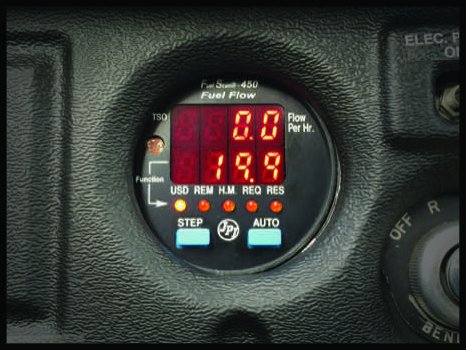
Paul Sanchez
– Hand-flying straight-and-level for hours at a time is fatiguing, no matter how much money you’re saving on fuel. Something with an autopilot both preserves your energy and allows you to perform other cockpit tasks without worrying too much about dropping a wing at the wrong time.
– You obviously need at least one good nav/comm; two are better. Some kind of panel-mounted GPS would be nice, even if it’s VFR-only. Noise-canceling headsets are a must in our airplanes even for short flights; they’re mandatory for long ones.
– An engine monitor, preferably with fuel flow, also comes in handy, especially when the engine goes auto-rough one dark night and you’re not sure everything up front is as it should be. An accurate picture of fuel availability will help you decide if you’ve got gas to go around weather or if another fuel stop will be necessary.
Dave Higdon is a professional aviation writer/photographer with several thousand hours of flight time in hang gliders and airplanes.

